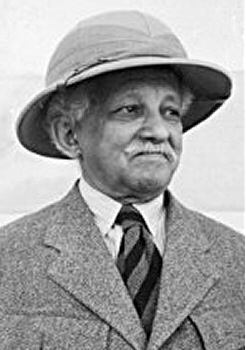“Israel” Found In A 15th Century BC Egyptian Text -- By: Bryant G. Wood
Journal: Bible and Spade (Second Run)
Volume: BSPADE 28:3 (Summer 2015)
Article: “Israel” Found In A 15th Century BC Egyptian Text
Author: Bryant G. Wood
BSpade 28:3 (Summer 2015) p. 71
“Israel” Found In A 15th Century BC Egyptian Text
Evangelical scholars are divided as to when the Exodus- Conquest events took place—some say the 15th century BC, while others hold to the 13th century BC. The chronological data in the Bible, however, clearly indicates that these events transpired in the 15th century BC, the Exodus occurring in 1446 BC and the Conquest 1406–1400 BC (Wood 2008: 100). Now, for the first time, we have evidence from an Egyptian source which supports the earlier biblical dating.
That source is an inscription housed in the Egyptian Museum in Berlin. It appears on a gray granite block 18 in (46 cm) high, 16 in (39.5 cm) wide and of unknown thickness since it was cut from a larger piece. According to the Museum’s records, the block—most likely part of a statue base—was acquired in 1913 by Ludwig Borchardt from an Egyptian merchant. Borchardt (1863–1938) was a German Egyptologist who is best known for his excavations at Tell el-Amarna where he discovered the famous bust of Nefertiti, queen of Akhenaten (ca. 1369–1352 BC).

Public Domain
Ludwig Borchardt (1863–1938), best known for his discovery of the bust of Nefertiti at Tell el-Amarna.

Wikimedia Commons
Bust of Nefertiti from Tell el-Amarna, now in the Egyptian Museum in Berlin.
The inscription is comprised of three name rings superimposed on Western Asiatic prisoners, the rightmost of which is only partly preserved due to substantial damage, probably incurred when the block was removed from its original context. Above the heads of the prisoners is a partial band of hieroglyphs which reads “…one who is falling on his feet…” The inscription was first published in 2001 by Manfred Görg (1938–2012), former
BSpade 28:3 (Summer 2015) p. 72

Staatliche Museen zu Berlin—Ägyptisches Museum und Papyrussammlung
Topographical statue base relief fragment depicting three Canaanite place names superimposed on Western Asiatic captives. The relief was purchased in Egypt in 1913 and is now in the Egyptian Museum in Berlin.
Professor Emeritus of Old Testament Theology and Egyptology at the University of Munich (Wood 2005a). The first two names are easily read—Ashkelon and Canaan. The name on the right, however, is less certain. Görg restored the right name as Israel and dated the inscription to the reign of Ramesses II (ca. 1290– 1223 BC) in the...
Click here to subscribe
